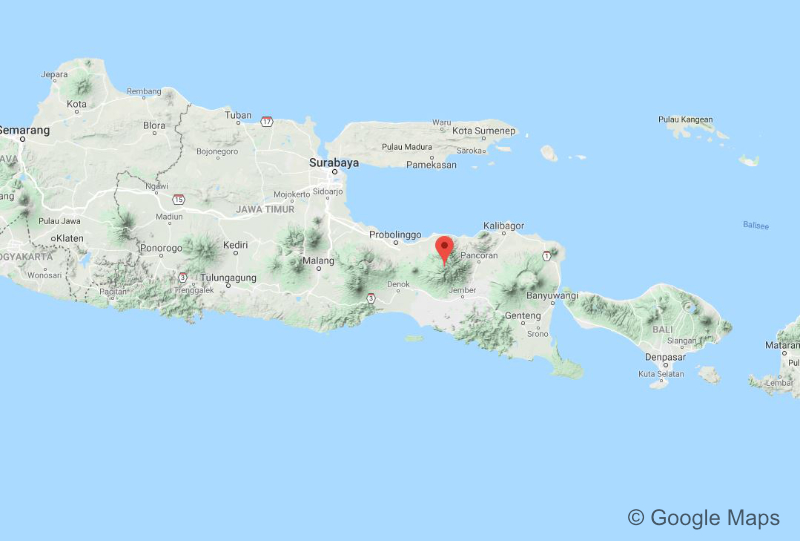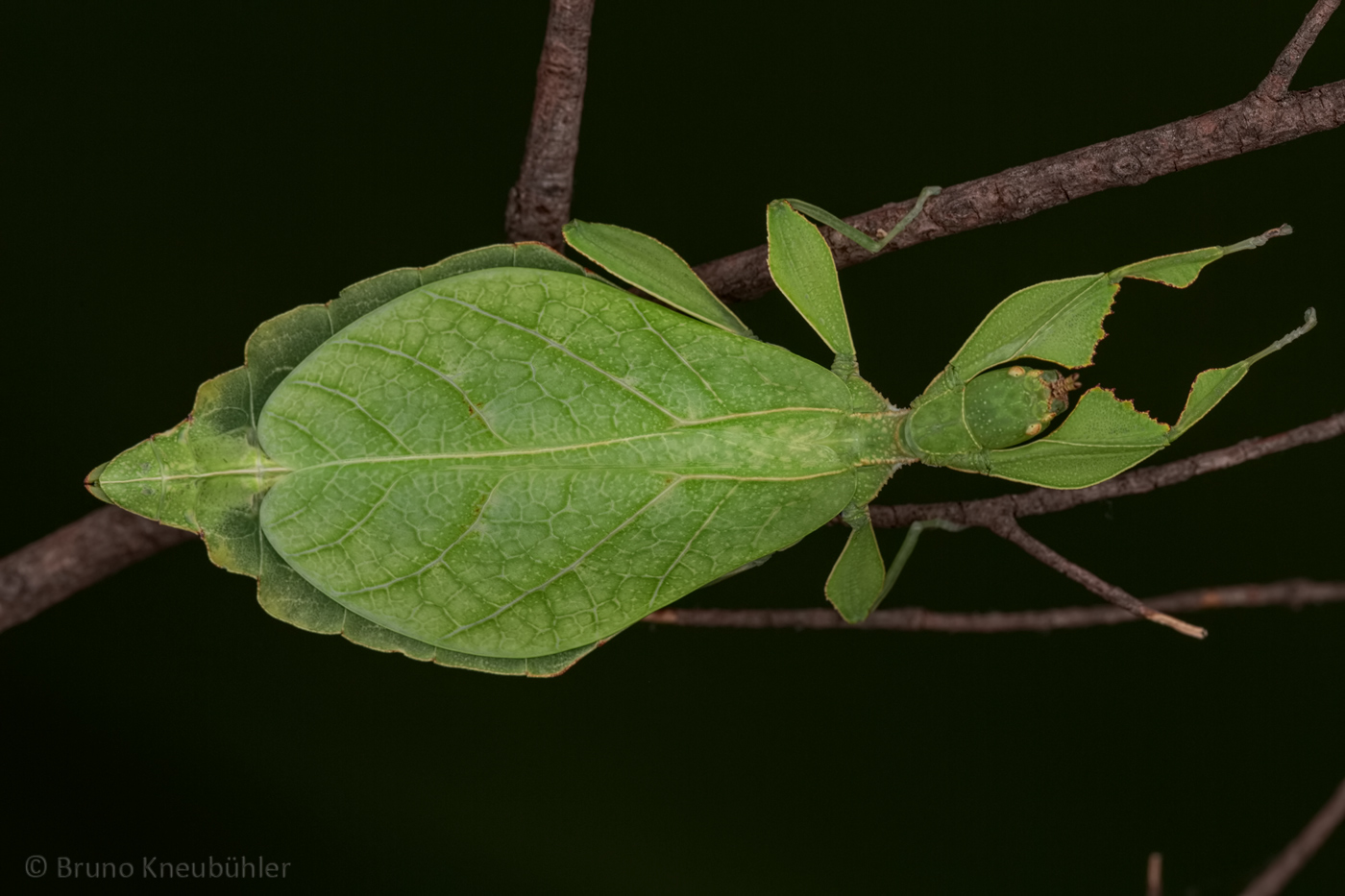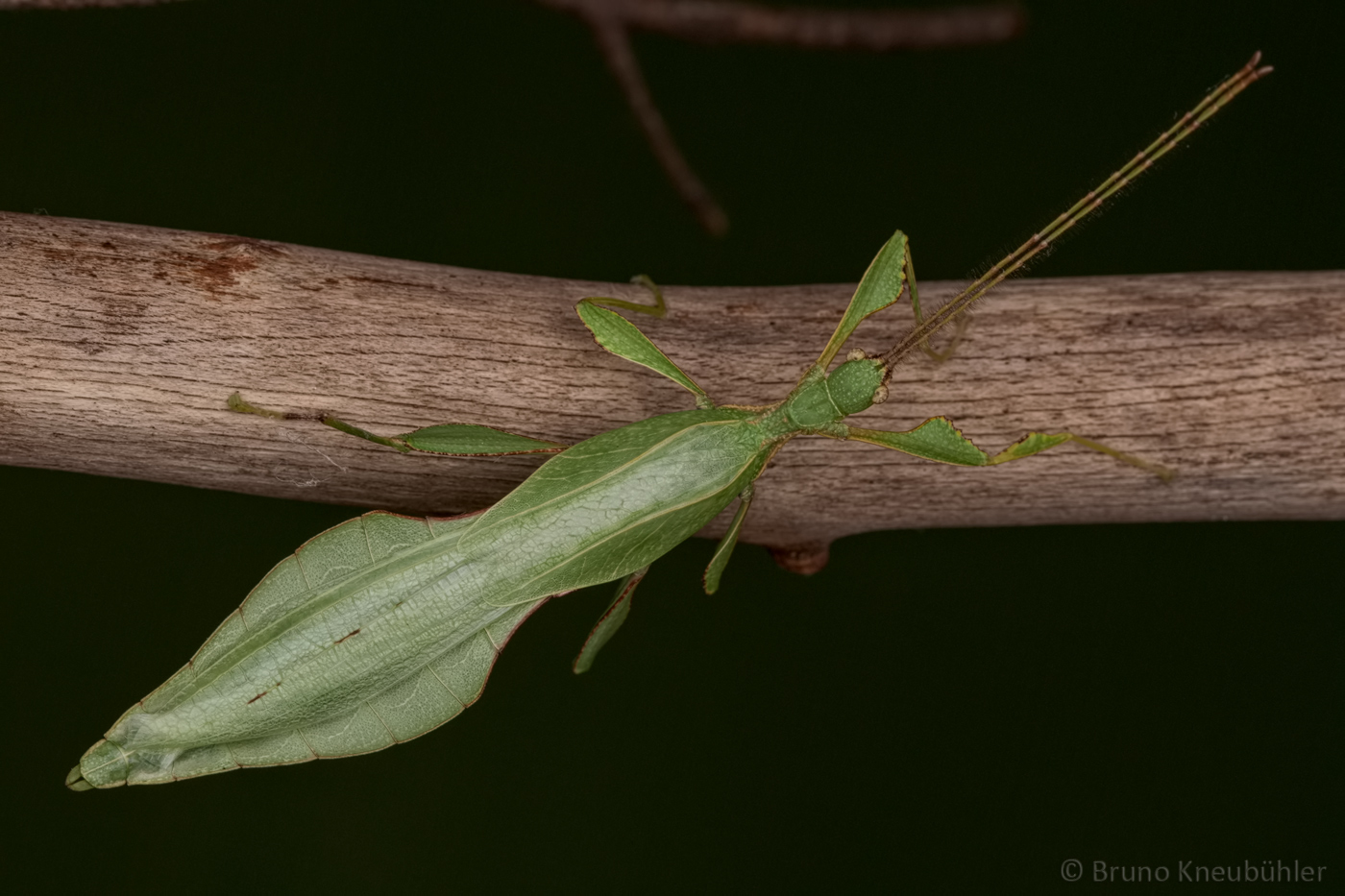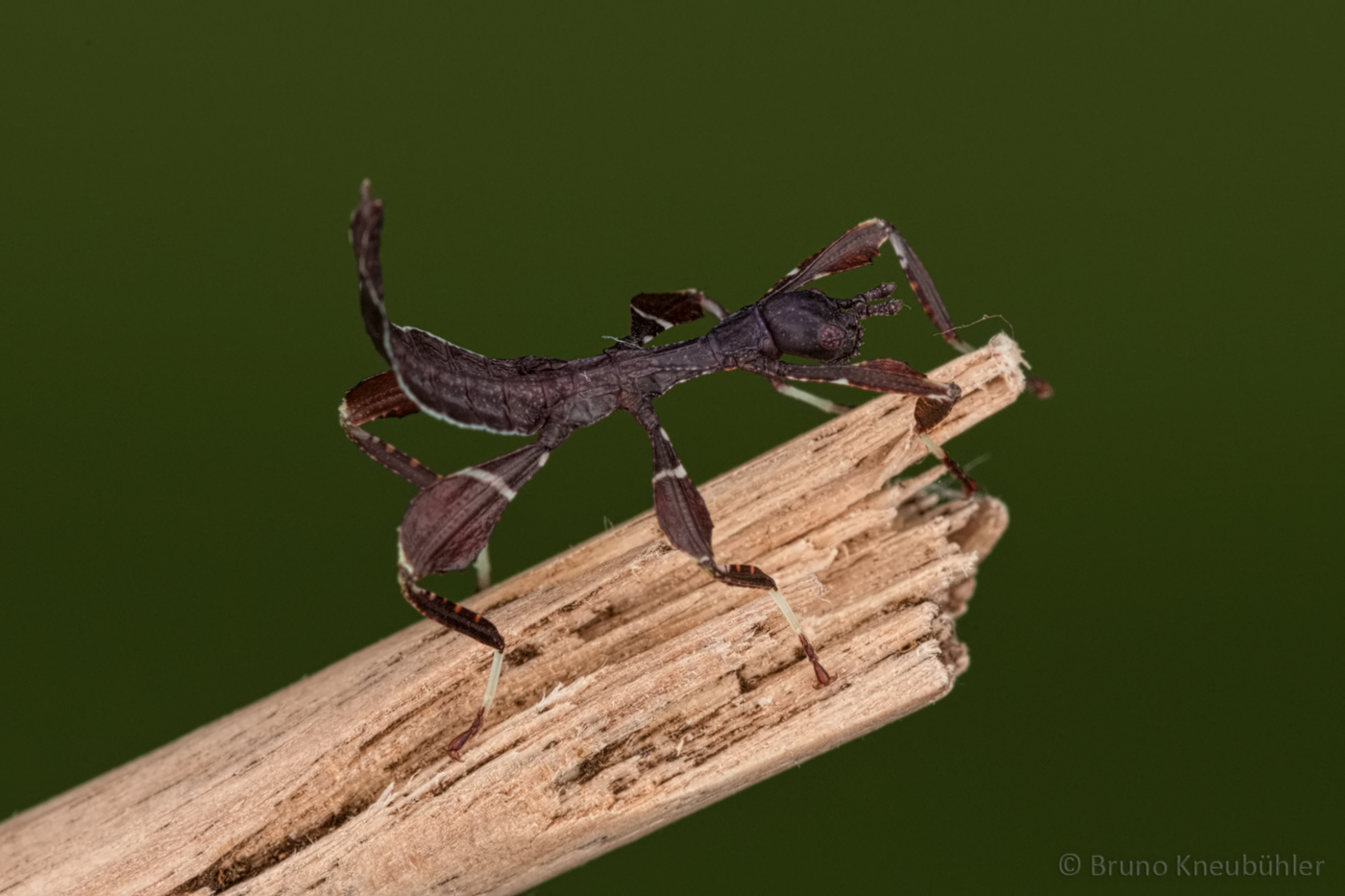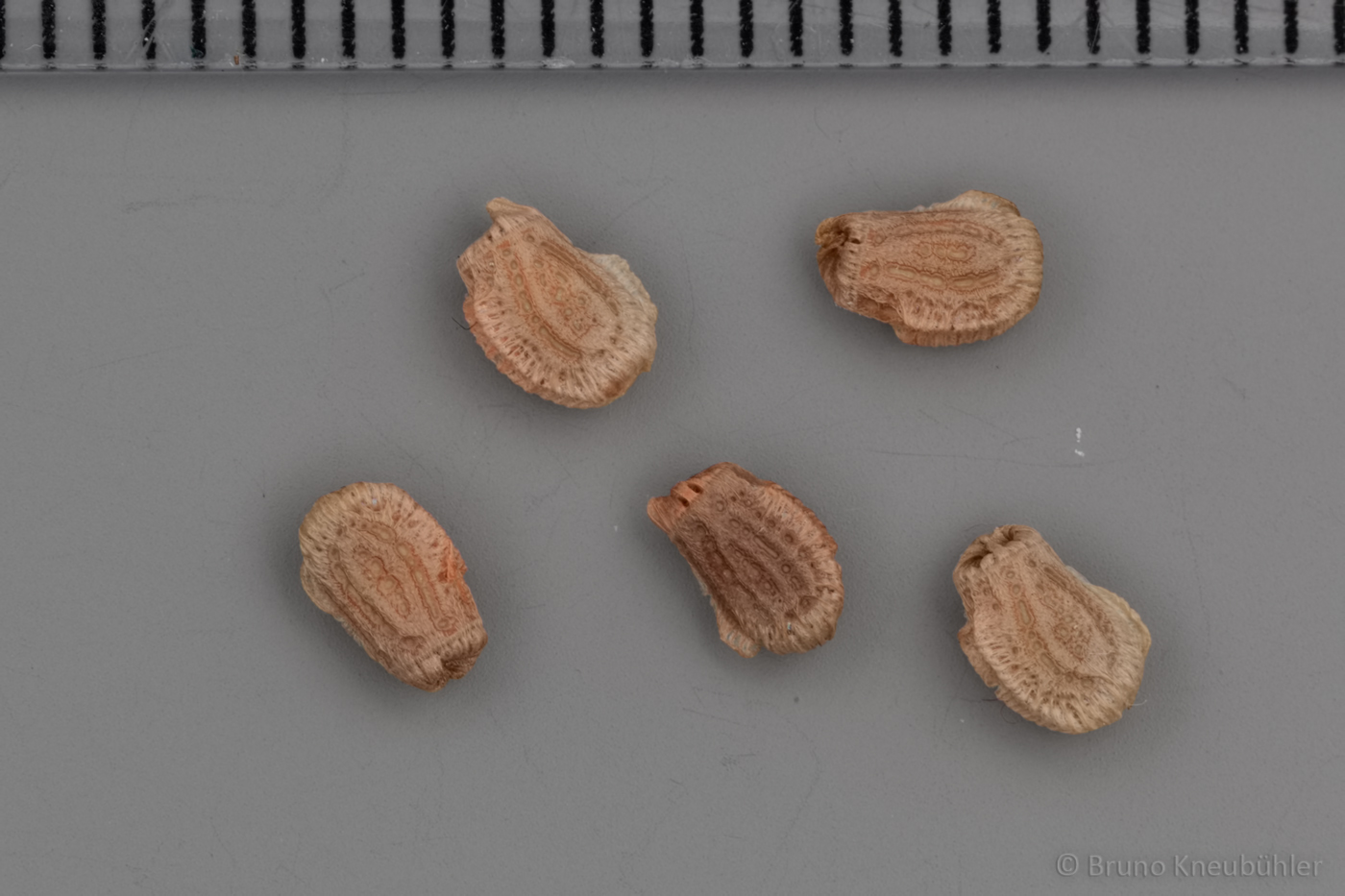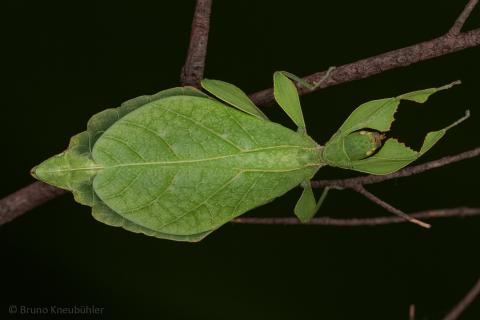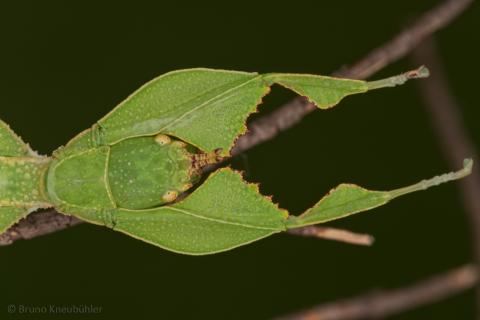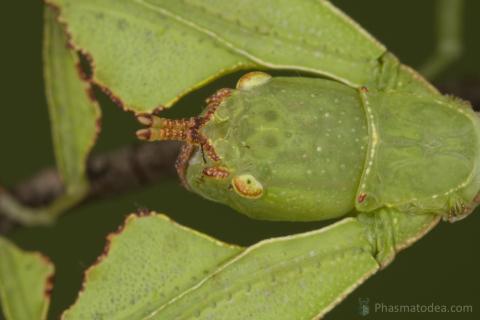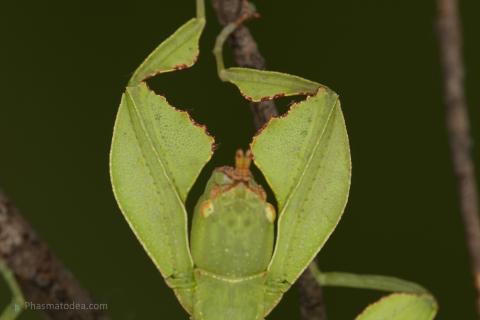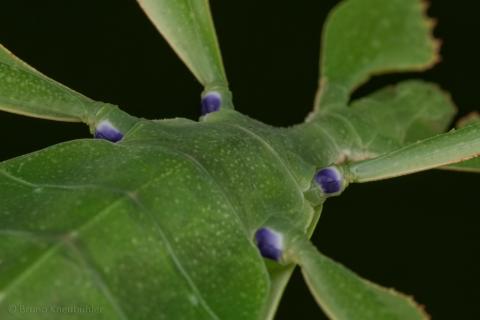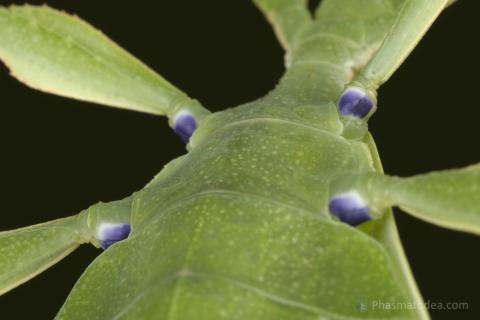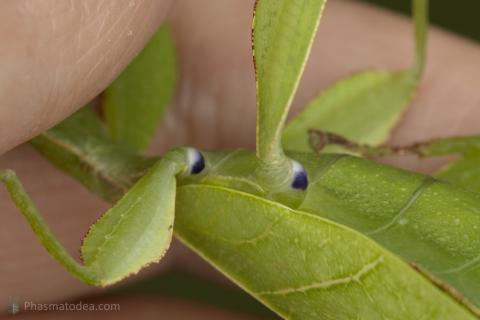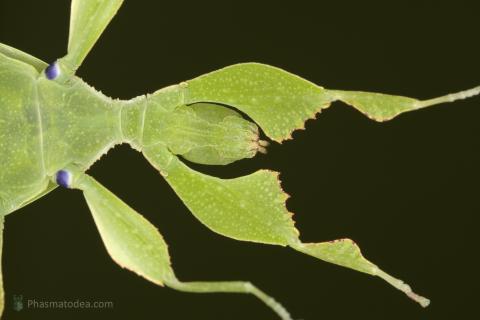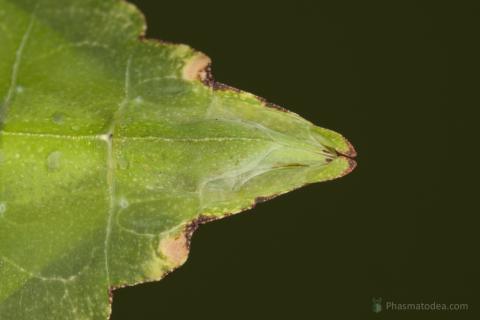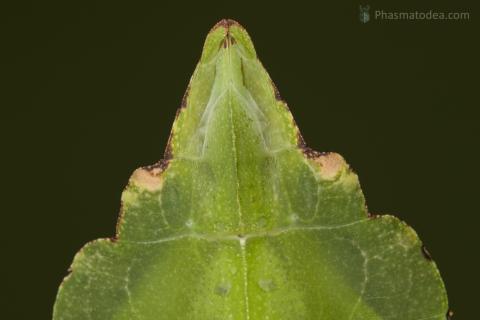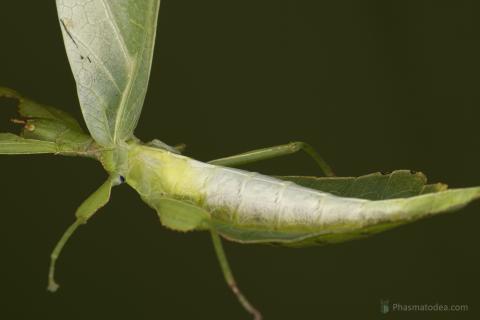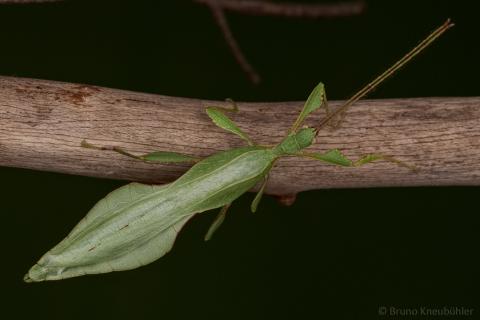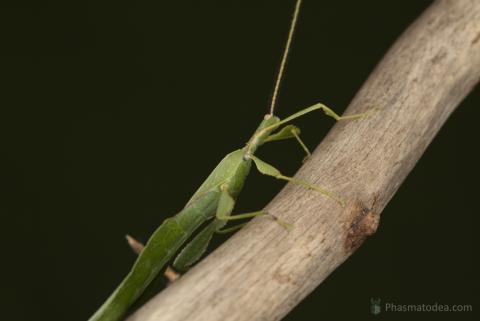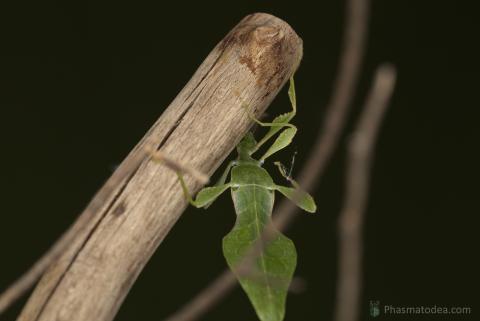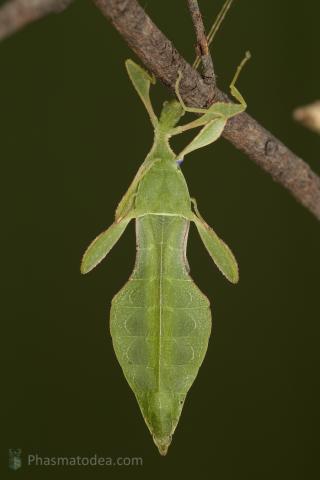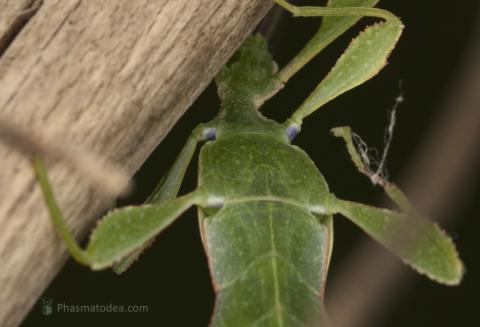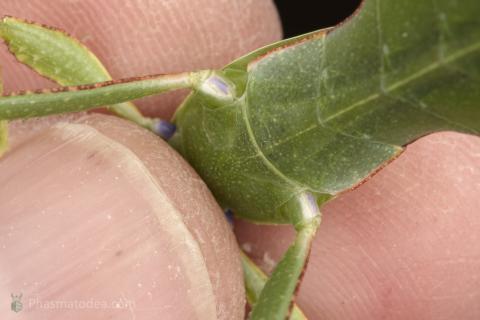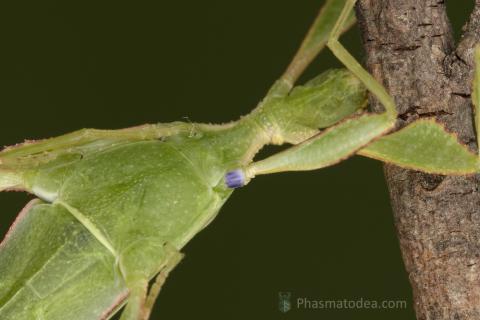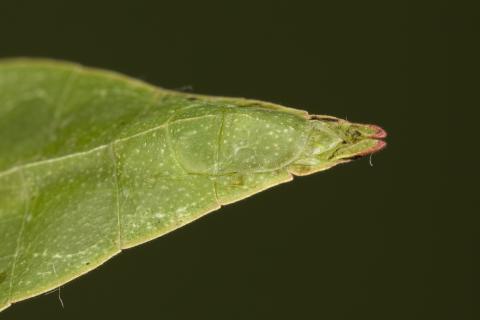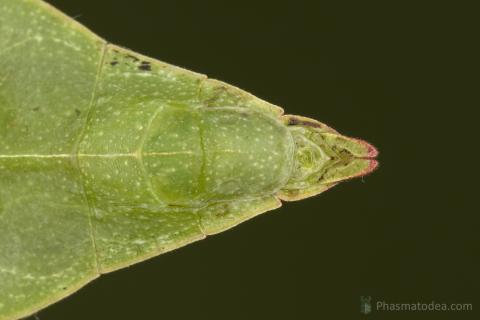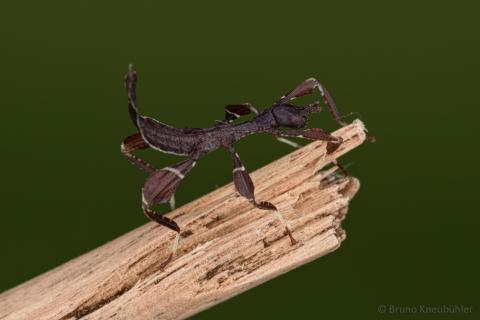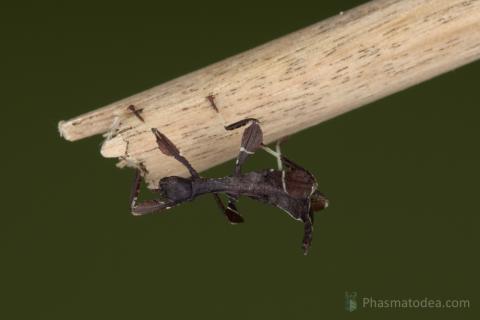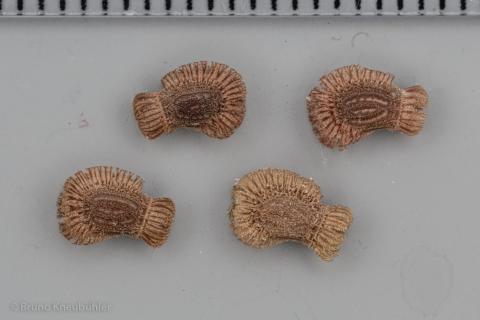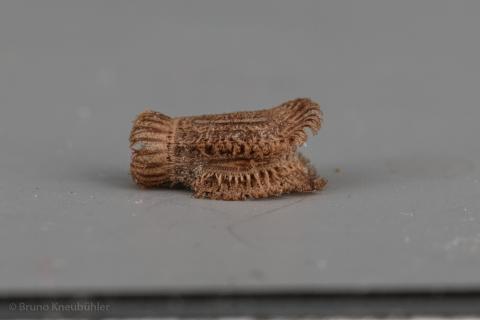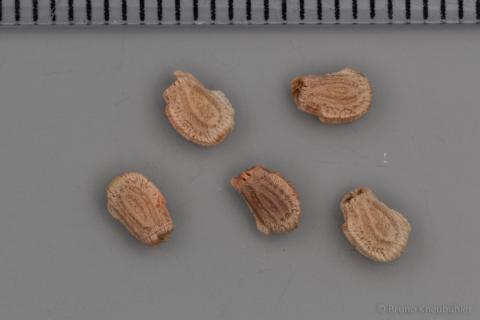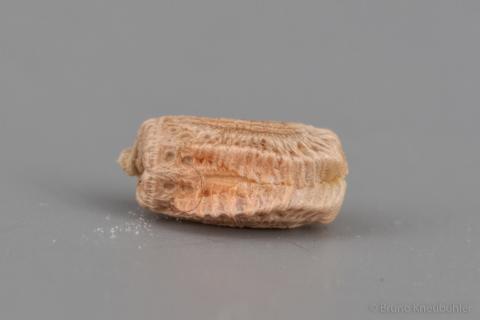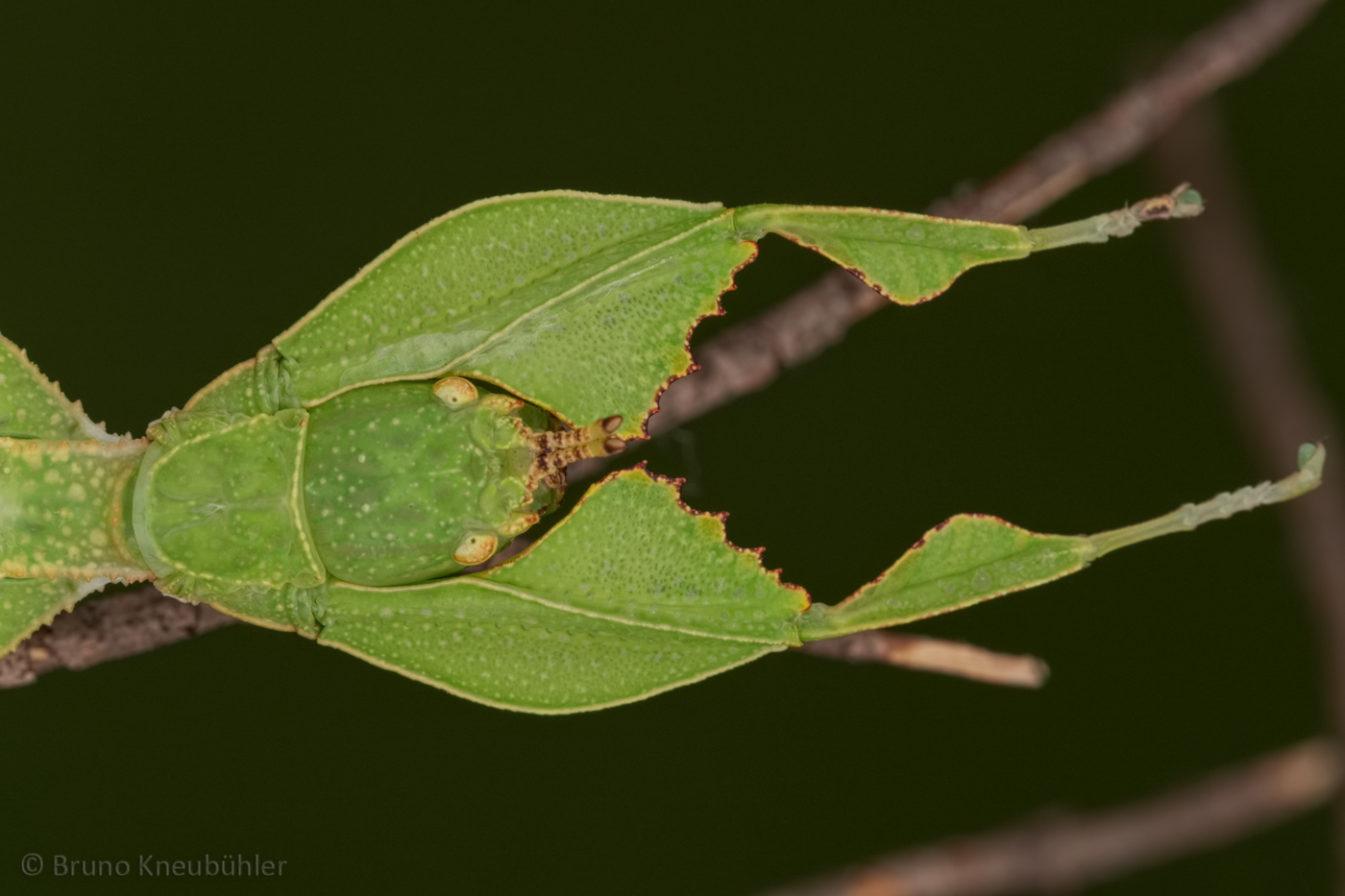
Genus
Stock
Culture status
In culture
Foodplants
Bramble (Rubus spp.)
Breeding notes
(by Bruno Kneubühler)
General Informations
- provenience: Mt. Argopuro (Java, Indonesia)
- this population belongs to the Phyllium hausleithneri species group, with distinct populations on Peninsular Malaysia (type), Sumatra (Phyllium sp. "Bukit Daun, blue coxae") and Java (Phyllium sp. "Argopuro, blue coxae")
- this population is known by two different names: Phyllium sp. "Argopuro, blue coxae" and Phyllium sp. "Argopuro, purple coxae")
- taxonomical evaluation by Royce Cumming (USA)
update - soon to be described as a new species or subspecies - further taxonomical informations ➤ Phasmida Species Files
Nymphs
- newly hatched nymphs are dark brown with whitish lines
- body length ≈ 12 mm
- on how to distinguish between male and female nymphs
Eggs
- ≈ 5 x 3 mm - frehly laid / before having been in contact with a humid /wet environment
- ≈ 6 x 4 mm - after being in contact with a humid / wet environment
- fringes egg expand after the eggs has been in contact with a humid / wet substratum. This expansion is not reversible
- the function of these fringes is not (yet) known, but wellknown for eggs of Phyllium (Phyllium) species. A possible explanation could be that this helps to anchor the eggs in moss or bark cracks in order to keep them in a safe place during their development. Or they have some adhesive propensities which could also help to keep the egg in a place
- orange-brown when freshly laid, and turn light straw-brown after being in contact with a humid substratum
Food Plants
- bramble (Rubus spp.)
well accepted by nymphs and adults
Behaviour, Biology, Breeding
- easy to breed
- please note our specific suggestions on how to successfully breed Phyllium
- males can react very hectic when being touched
- as in other Phyllium species, the socalled "behavioural cannibalism" is quite a problem in this culture
- females fling the eggs away with a swift swing of their abdomen
- eggs just drop to the ground
- about 10 eggs per female and week
- incubation (Cup-Incubation-Method, on medium damp vermiculite) about 4 - 5 months at 20 - 24 °C. But please note that the incubation time is strongly influenced by the incubation temperatur
- as a side note, it is quite common that from the very same batch of phasmid eggs, some nymphs will hatch weeks, months or even years after the first hatchlings
- eggs can be covered with vermiculite (about 5 mm high), which makes it easier for the nymphs to hatch without getting stuck to the eggs shell. Alternatively one can put wood wool over the eggs, when the nymphs start hatching
- eggs of this species are quite prone to get mouldy, thus it is a good idea to use springtails to limit mould growth
- nymphs hatch after daybreak, usually in the early morning hours before noon. They do not hatch during the night, which is typical for Phyllium
- the Free-Standing Setup (FSS) works well to get Phyllium nymphs to start feeding and helps limiting the loss of small nymphs
- a humidity of about 65 - 70 % rH is good enough for nymphs and adults, though a higher humidity (75 - 90 % RH) is not wrong . I am keeping Phyllium nymphs at a humidity of 50 - 60% rH with good success, though occasionally mismoults happen
- nymphs and adults can be sprayed 2 - 3 times a week with chlorine-free water, but make sure that the water dries up before spraying again
- I use a blackwater conditioner in the spraying water
- small nymphs can be kept in a Faunabox (or a similar cage), which shall not be too small
- move nymphs to a bigger cage as they grow bigger
- provide a cage of about 40 x 30 x 30 (cm, L x B x H) for 2 - 3 adult couples
- males will be adult after 4 - 5 months (at 20 - 24°C), females after 5 - 6 months. But please note, that this development time is greatly influenced by temperature
- our detailed notes on how to successfully breed phasmids are an integral part of this care sheet
- in order to maintain strong and healthy cultures, often 2 - 3 cages per species are needed (to keep nymphs and adults seperate)
- keep just one species per cage. Informations on why and how to keep cultures seperate and pure
- whenever you post informations or distribute a culture to fellow breeders, then make it a point to use the full and correct scientific name with provenience affix:
- correct is for example Extatosoma tiaratum "Innisfail" - for the pure culture which originates from Innisfail
- incorrect and misleading is "prickly stick insect" for Extatosoma tiaratum, as there are many more "prickly" phasmids. Serious breeders do not use common names, as such designations only lead to confusion.
- if possible keep day temperatures below 28°C, and a nocturnal temperature drop is natural and advisable
- do not spray too often and too much, phasmids are no fish. In the confined space of a cage, with it's very limited potential for climatic balancing, humidity and moisture can quickly become too much and give raise to excessive mould and microbiologial growth
